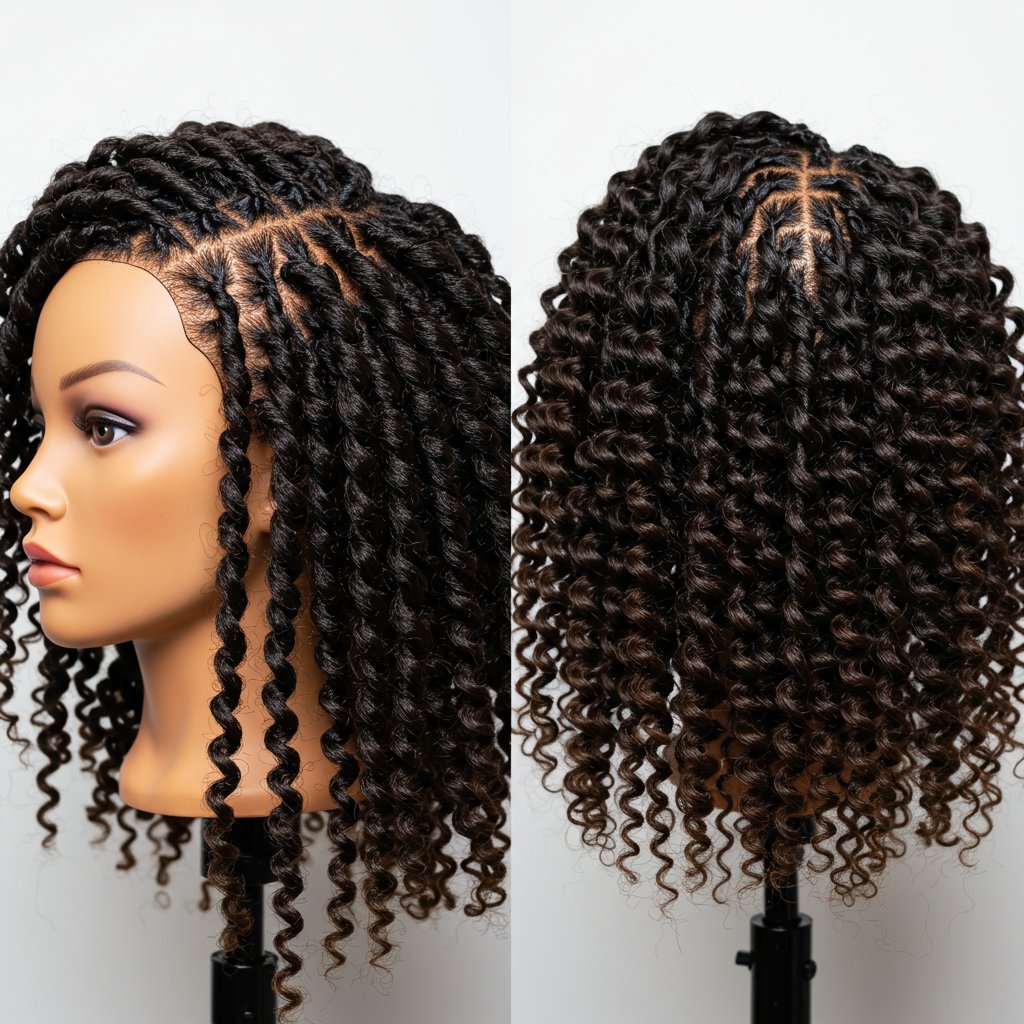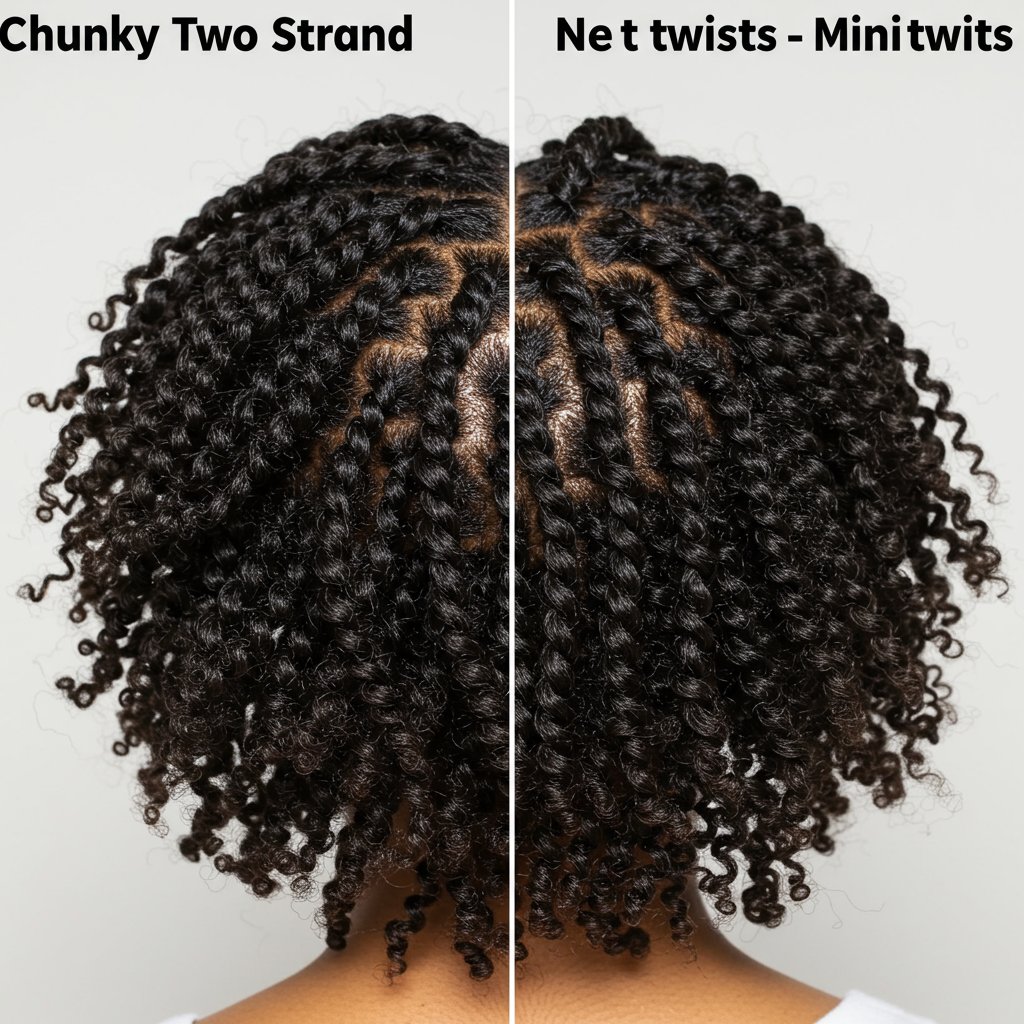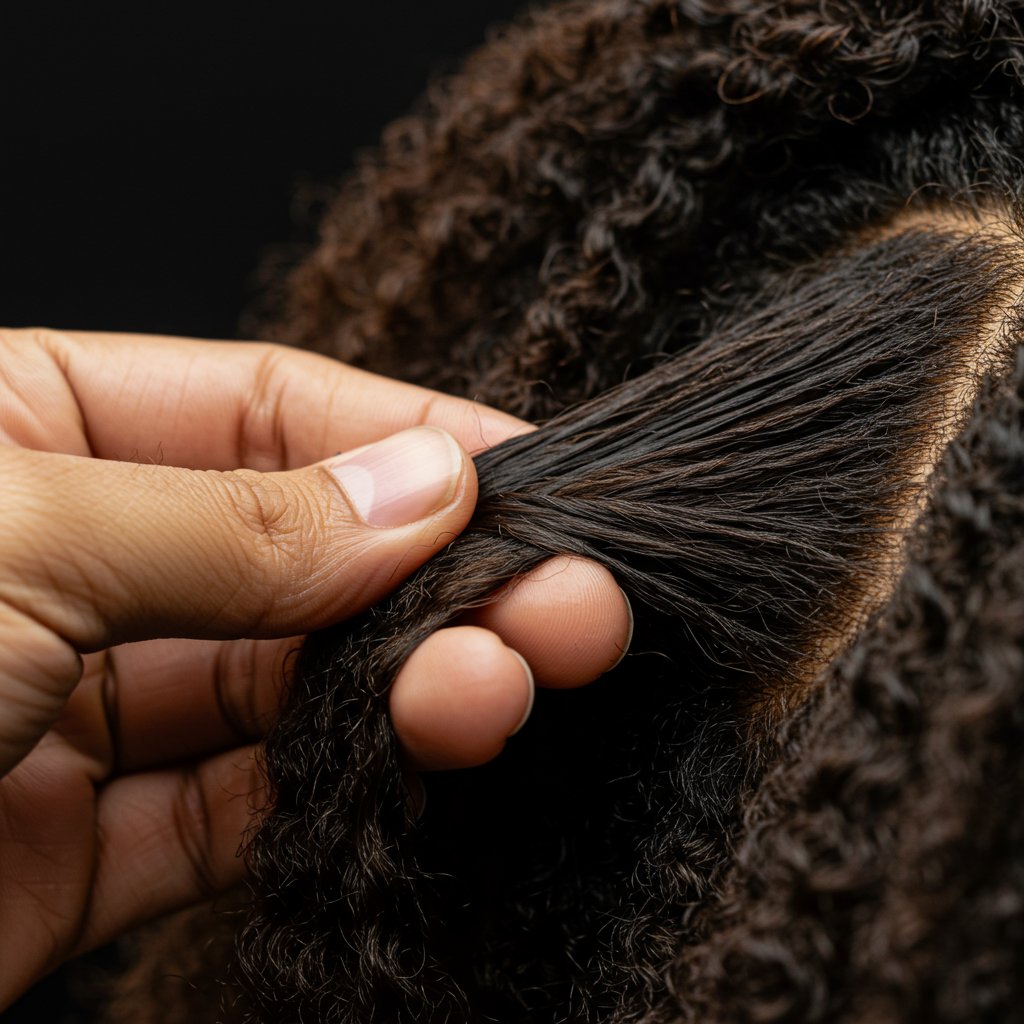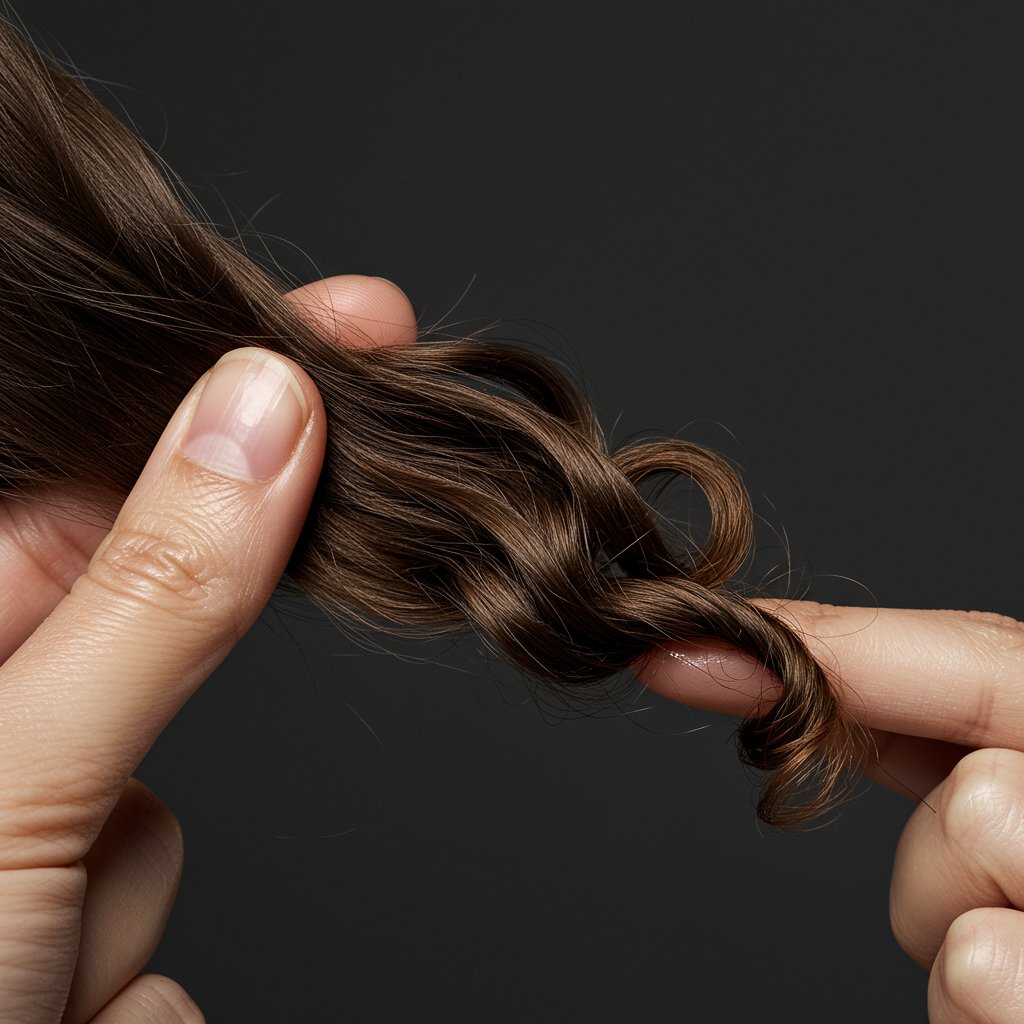
Predicting the Woman Hairstyles of the Future: 7 Trends Shaping the Next Decade | Tech & Sustainability
12 min read

12 min read

12 min read

14 min read
Download our app to instantly see how you'd look with any hairstyle or color
Get the App
15 min read

12 min read

12 min read
Download our app to instantly see how you'd look with any hairstyle or color
Get the AppIn the vibrant world of natural hair, few styles offer the versatility, protective benefits, and stunning results of twists and twist-outs. This iconic duo is more than just a hairstyle; it's a fundamental technique that unlocks the full potential of coily, kinky, and curly textures. From elegant, rope-like twists that serve as a long-lasting protective style to the bouncy, defined curls of a perfect twist-out, this method is a cornerstone of healthy hair care routines. Whether you're a seasoned naturalista or just beginning your journey, mastering twists and twist-outs for natural hair is an essential skill that promotes hair health while delivering breathtaking aesthetic results.

This comprehensive guide serves as your ultimate resource for everything related to this beloved styling technique. We will delve deep into the nuances of preparation, explore various twisting methods, and provide a step-by-step roadmap to achieving a flawless, frizz-free twist-out every time. Understanding the science behind product application, the importance of proper takedown, and the secrets to long-lasting styles will empower you to embrace your natural texture with confidence. Get ready to transform your hair care regimen and discover why twists and twist-outs remain a celebrated staple for achieving defined, moisturized, and healthy natural hair.
Before diving into the techniques, it's crucial to understand the distinction and relationship between twists and the resulting twist-out. They are two sides of the same coin, each offering unique benefits. Twists, in their most basic form, are a hairstyle created by wrapping two strands of hair around each other from root to tip. This can be done on damp or dry hair and serves as a beautiful protective style on its own. It minimizes manipulation, tucks away ends to prevent breakage, and helps retain moisture, making it an excellent choice for promoting hair growth and length retention.

The beauty of twists lies in their adaptability. The size and type of twist you choose will dramatically influence both the look of the twists themselves and the final twist-out. Understanding these variations allows you to customize your style to match your desired outcome, hair density, and lifestyle. From micro-twists that last for weeks to chunky twists perfect for a quick style, there's a version for everyone.

The success of your twists and twist-out is determined long before you create the first twist. A meticulous preparation routine is non-negotiable for achieving a moisturized, defined, and long-lasting style. Skipping these foundational steps can lead to frizz, dryness, and a style that doesn't last. The goal is to start with a clean, hydrated, and detangled canvas.

First, begin with a thorough cleanse using a sulfate-free, moisturizing shampoo. This removes any product buildup, dirt, or oils without stripping the hair of its natural moisture. Follow up with a rich, deep conditioner. This is a critical step for infusing the hair with hydration and nutrients. For best results, use a hooded dryer, steamer, or even just a plastic cap to allow the conditioner to penetrate the hair shaft deeply for at least 20-30 minutes. This intensive moisture treatment makes the hair more pliable and less prone to breakage during styling.
After rinsing the deep conditioner, the next crucial phase is detangling and applying leave-in products. On soaking wet or damp hair, apply a generous amount of a quality leave-in conditioner to help with slip. Gently detangle your hair, starting from the ends and working your way up to the roots, using your fingers or a wide-tooth comb. Once fully detangled, section your hair into four to six manageable parts and secure them with clips. This organization prevents re-tangling and makes the twisting process much smoother and more efficient.
With your hair prepped and sectioned, you're ready to begin the installation process. The products you choose and the technique you use here will define the outcome of your style. The popular L.O.C. (Leave-in, Oil, Cream) or L.C.O. (Leave-in, Cream, Oil) methods are excellent for layering products to seal in moisture effectively.

The moment of truth has arrived. The takedown process is just as important as the installation. A rushed or improper takedown can instantly ruin a perfectly good set of twists with frizz and a loss of definition. Patience is your greatest asset here. Before you begin, ensure your twists are 100% dry. Unraveling even slightly damp twists is a guaranteed recipe for a frizzy, undefined style.

To begin, lightly coat your fingertips with a natural oil, such as jojoba, almond, or olive oil. This simple step is a game-changer; the oil minimizes friction between your fingers and your hair, which is the primary cause of frizz during the takedown process. It also adds a beautiful, healthy sheen to your finished style. Starting from the bottom of a twist, gently unravel it in the opposite direction that it was twisted. Do not pull or rip the twist apart.
Once all the twists are unraveled, you'll have sections of defined curls. You can leave them as they are for a chunky, super-defined look, or you can carefully separate them for more volume. To separate, look for the natural points where the curl wants to split and gently pull them apart. Again, make sure your fingers are oiled. For even more volume, you can use a hair pick to gently lift the roots, being careful not to pick through the ends of the hair, which can disrupt the curl pattern. Fluff and arrange until you achieve your desired shape and volume.
You’ve spent time and effort creating a beautiful twist-out, so you'll want it to last as long as possible. With the right maintenance routine, you can often enjoy your style for three to seven days, or even longer. The key to longevity is proper nighttime protection and daily refreshing. Protecting your hair while you sleep is the most crucial step in preserving your twist-out.

At night, gather your hair into a “pineapple”—a high, loose ponytail on top of your head—using a gentle hair tie like a satin scrunchie. This keeps the curls from getting crushed and flattened while you sleep. For extra protection, cover your hair with a silk or satin bonnet or scarf. Alternatively, sleeping on a silk or satin pillowcase can also reduce friction and prevent moisture loss. These materials are smooth and won't snag or dry out your curls like cotton can.
To refresh your style in the morning, gently take down the pineapple and shake your hair out. You can use a light mist of water or a curl refresher spray to revive any curls that have lost their bounce. If certain areas have become frizzy, you can apply a small amount of styling cream or oil and re-twist just those small sections overnight. This spot treatment allows you to maintain the overall style without having to redo your entire head.
Even with the best intentions, a few common mistakes can stand between you and the perfect twist-out. Being aware of these pitfalls can help you troubleshoot and refine your technique for consistently amazing results. One of the most frequent errors is installing twists on hair that is either too wet or completely dry. Twisting on soaking wet hair can lead to extreme shrinkage and a much longer drying time. Conversely, twisting on dry hair often results in a less defined, frizzy style. The sweet spot is typically damp, well-moisturized hair.

Another common issue is using the wrong products or too much product. Heavy butters and greases can weigh the hair down, leaving it feeling greasy and creating a limp twist-out. On the other hand, not using enough product, particularly a styler with some hold, can result in a style that lacks definition and doesn't last. Experiment to find the right balance for your hair's porosity and density. It's often better to apply products in thin layers rather than one heavy application.
Finally, a lack of patience during the takedown is a major culprit for failed twist-outs. As mentioned before, ensure your hair is completely dry and always use oil on your fingers to minimize frizz. Rushing this final step can undo all your hard work. Remember that a great twist-out is a process, and each step, from prep to takedown, plays a vital role in the final outcome.
Ready to elevate your styling game? Here are a few professional tips to take your twists and twist-outs for natural hair to the next level:
Twists and twist-outs for natural hair are more than just a passing trend; they are a fundamental part of a healthy and versatile hair care journey. This dual-purpose style offers the protective benefits of minimizing manipulation while delivering the stunning aesthetic of defined, voluminous curls. By understanding the importance of a solid prep routine, mastering the installation and takedown techniques, and committing to proper maintenance, you can consistently achieve beautiful results that celebrate your natural texture.
Whether you prefer the tight definition of mini twists or the soft waves of chunky twists, this technique is endlessly customizable to your personal style and hair goals. Embrace the process, experiment with different products and sizes, and don't be afraid to seek professional guidance to perfect your technique. Twists and twist-outs are a powerful tool in your styling arsenal, empowering you to nurture your hair's health while showcasing its incredible beauty.
Download our app to instantly see how you'd look with any hairstyle or color
Get the App
12 min read

12 min read

14 min read